Straightening your teeth with Invisalign while pregnant might seem like a tricky decision, but don’t worry! This detailed guide answers your most pressing questions, helps you weigh the pros and cons, and provides actionable advice to ensure a smooth experience. Whether you’re newly expecting or planning a family, this article breaks it all down.
What Is Invisalign and How Does It Work?
How Invisalign Aligns Your Teeth
Invisalign is a modern orthodontic treatment that uses clear, custom-made aligners to gradually shift teeth into their correct positions. Unlike traditional braces, these aligners are removable and nearly invisible, making them a popular choice for adults who prioritize aesthetics.
Each aligner is designed to exert controlled pressure on specific teeth, moving them over time. Patients typically switch to a new set every one to two weeks as per their orthodontist’s guidance. Aligners need to be worn for at least 20–22 hours a day for optimal results.
Key Benefits of Choosing Invisalign
- Discreet Appearance: The clear design is nearly invisible, so you can smile confidently.
- Convenience: You can remove the aligners to eat, drink, brush, and floss.
- Fewer Dental Visits: Invisalign often requires fewer in-office appointments compared to braces.
- Comfort: Without brackets or wires, aligners are gentler on your cheeks and gums.
Can You Wear Invisalign While Pregnant?
Is It Safe to Start Invisalign Treatment During Pregnancy?
Yes, in most cases, wearing Invisalign while pregnant is considered safe. The aligners are made of BPA-free, medical-grade plastic, posing no risk to you or your baby. However, it’s essential to discuss your treatment plan with your dentist or orthodontist to address any specific concerns.
When Might Invisalign Be Unsafe?
Invisalign might not be the best choice if you’re experiencing severe pregnancy-related oral health issues, such as significant gum swelling or gingivitis. Hormonal changes during pregnancy can make gums more sensitive, potentially complicating treatment.
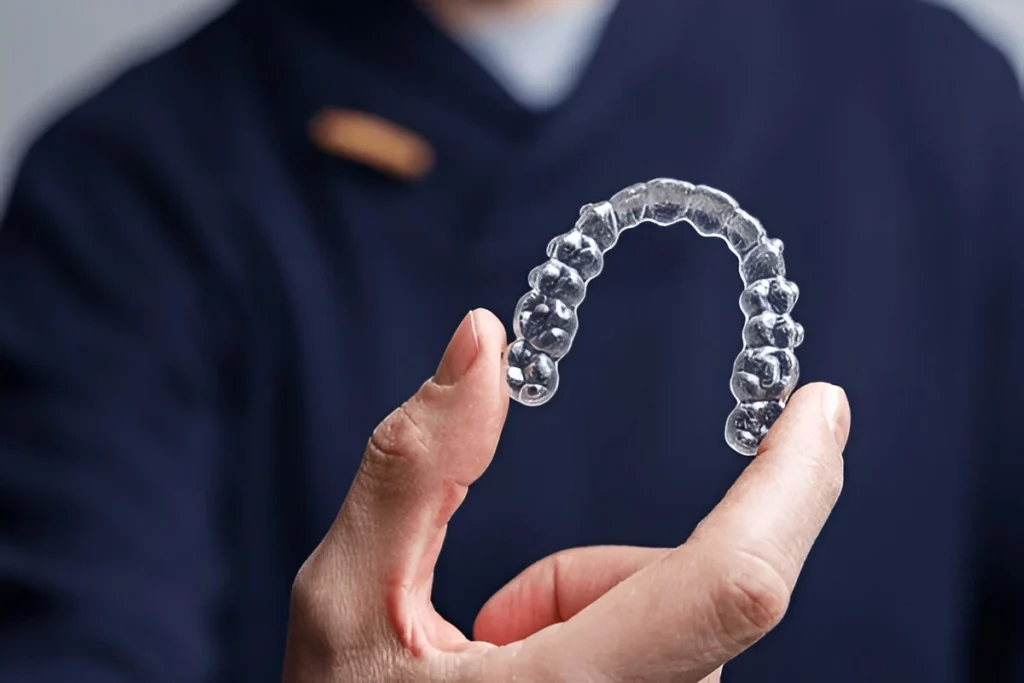
Benefits of Invisalign While Pregnant
Improved Dental Aesthetics During Pregnancy
Pregnancy often brings about changes in how women feel about their appearance. Invisalign allows you to maintain or improve your smile, boosting self-esteem during a time of significant physical changes.
Boost in Confidence Despite Pregnancy Challenges
Feeling good about your smile can positively impact your mental health. Whether you’re attending baby showers or snapping maternity photos, a confident smile can make all the difference.
Potential Risks of Invisalign While Pregnant
Pregnancy Hormones and Gum Sensitivity
Hormonal surges can make gums more prone to swelling, tenderness, and even bleeding. These changes might make aligner adjustments uncomfortable. Regular dental checkups are essential to monitor gum health during treatment.
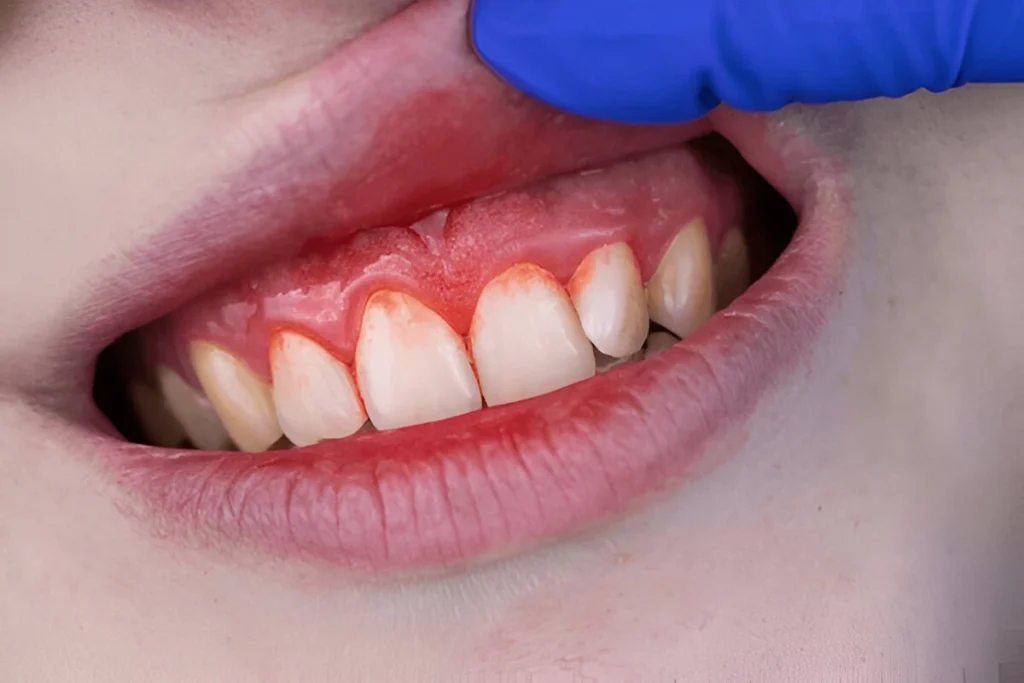
Managing Nausea and Saliva Buildup
Morning sickness and increased saliva production can make wearing aligners less appealing. Cleaning your aligners frequently and practicing good oral hygiene can mitigate these challenges.
How to Safely Start Invisalign While Pregnant
Consultation with Your Dentist or Orthodontist
Before beginning treatment, inform your dental care provider about your pregnancy. They can tailor a treatment plan that prioritizes both your dental health and comfort.
Creating a Pregnancy-Friendly Treatment Plan
Your orthodontist may recommend more frequent check-ins to ensure that the aligners fit well and your gums remain healthy. Using a softer aligner material might also be an option to accommodate gum sensitivity.
Does Invisalign Impact Pregnancy Health?
Effects on Baby’s Development
There’s no evidence suggesting Invisalign harms your baby’s growth. Its BPA-free plastic ensures you won’t be exposed to harmful chemicals.
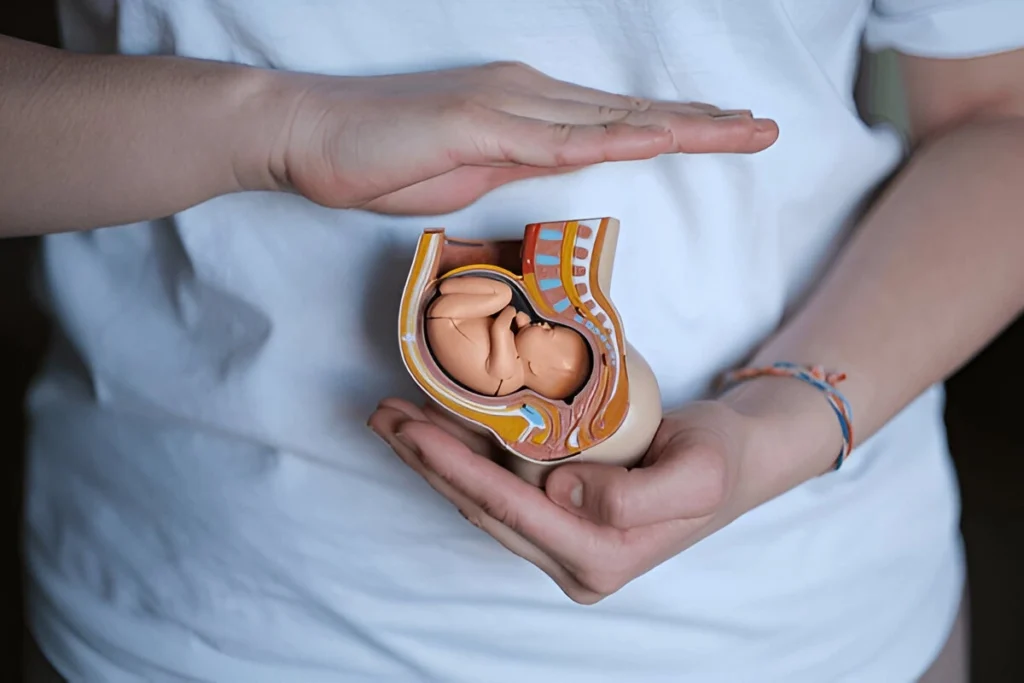
Safety of Invisalign Materials
Invisalign aligners are made of medical-grade thermoplastic, which is safe for oral use and doesn’t leach harmful substances.
Adjusting to Invisalign During Pregnancy
Coping with Morning Sickness and Aligners
If nausea strikes, remove your aligners temporarily and rinse your mouth with water or a mild mouthwash. Clean the aligners thoroughly before putting them back.
Staying Hydrated and Maintaining Oral Hygiene
Drinking water frequently helps with dry mouth and reduces bacterial growth, keeping your teeth and aligners fresh.
Hormonal Changes and Dental Care
Impact of Pregnancy Hormones on Oral Health
Pregnancy hormones, especially elevated levels of estrogen and progesterone, can wreak havoc on oral health. These hormones increase blood flow to gum tissues, which may lead to swelling, tenderness, or even bleeding gums—a condition known as pregnancy gingivitis.
When using Invisalign during pregnancy, it’s crucial to monitor your gum health closely. Swollen gums can make wearing aligners uncomfortable, and untreated gum issues might progress to periodontal disease, potentially impacting the success of your Invisalign treatment.
How Invisalign Fits into Your Dental Routine
The removable nature of Invisalign allows you to maintain excellent oral hygiene during pregnancy. Unlike traditional braces, which can trap food and plaque, Invisalign aligners make it easier to brush and floss effectively. However, you’ll need to clean your aligners regularly to prevent bacteria buildup, especially since pregnancy increases susceptibility to dental issues.
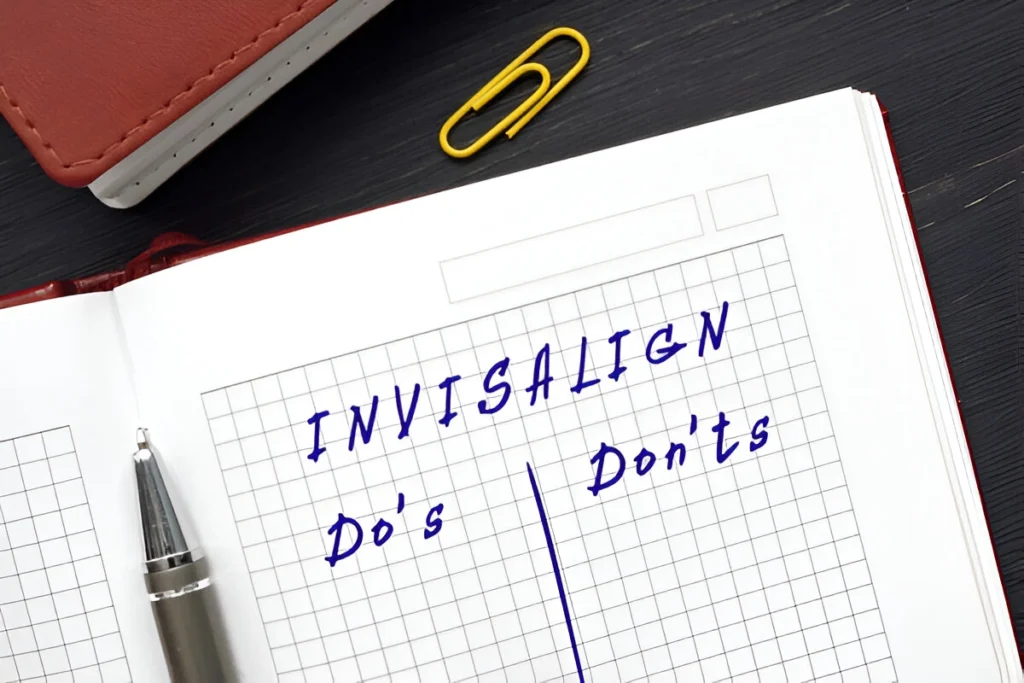
Pro Tip: Rinse your aligners with lukewarm water and use a gentle toothbrush or Invisalign cleaning crystals to keep them sparkling clean.
Can Invisalign Affect Pregnancy Nutrition?
Eating Habits with Aligners On
Wearing Invisalign means you’ll need to remove your aligners before eating. While this promotes mindful eating and reduces snacking, it’s important to avoid prolonged gaps without aligners, as it can hinder progress. Stick to nutrient-rich meals that are easy to clean off your teeth afterward.
Pregnant women often experience cravings or aversions, and Invisalign might feel like an inconvenience during those quick snack runs. Planning aligner-free eating windows can help you balance your nutritional needs with your treatment goals.
Nutritional Tips to Protect Oral Health
Pregnancy demands a diet rich in calcium, vitamin D, and other essential nutrients to support your baby’s development and your oral health. Foods like leafy greens, dairy products, and nuts strengthen teeth and gums, which is especially important when wearing aligners.
Avoid sugary snacks or acidic drinks that can erode enamel. If you indulge, rinse your mouth and clean your teeth before reinserting your aligners to prevent plaque buildup.
Tips for Comfortably Wearing Invisalign While Pregnant
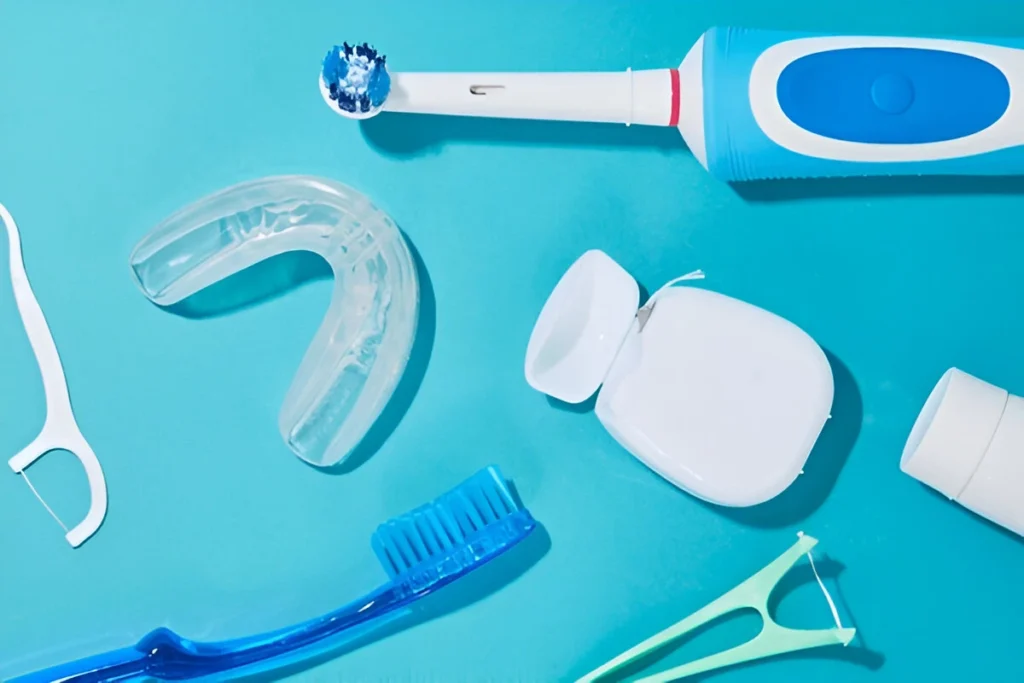
Managing Sore Gums and Jaw Pain
Sore gums are a common complaint among pregnant Invisalign users. To alleviate discomfort:
- Use orthodontic wax to reduce irritation.
- Rinse your mouth with saltwater to soothe tender gums.
- Take breaks from aligners if swelling becomes too severe (but consult your orthodontist).
Using Wax and Other Comfort Tools
Orthodontic wax is a lifesaver for sore spots caused by aligner edges. You can also use specialized silicone pads or a nail buffer to smooth out rough aligner edges.
Pro Tip: Keep a small kit with wax, a portable toothbrush, and cleaning wipes in your bag for on-the-go aligner maintenance.
Costs and Insurance Coverage for Invisalign During Pregnancy
Typical Invisalign Costs
The cost of Invisalign treatment ranges between $3,000 and $8,000, depending on the complexity of your case. Additional factors, such as retainers and dental visits, can add to the expense.
While this may seem steep, many orthodontic offices offer payment plans or financing options, making treatment more affordable.
Does Dental Insurance Cover Pregnancy Invisalign?
Dental insurance policies vary, but most plans classify Invisalign as a cosmetic procedure, meaning limited or no coverage. However, some comprehensive policies or orthodontic add-ons might partially cover costs. Speak to your insurance provider to understand your benefits.

Alternatives to Invisalign for Pregnant Women
Traditional Braces vs. Invisalign
Traditional braces may be more suitable for pregnant women with complex dental issues. However, braces come with their own set of challenges, including dietary restrictions and potential gum irritation, which might be exacerbated by pregnancy hormones.
Invisalign remains a more convenient and comfortable option for most cases, particularly for women who prioritize discretion and flexibility.
Other Non-Invasive Options
If you’re hesitant to start orthodontic treatment during pregnancy, consider non-invasive alternatives like:
- Retainers: These maintain alignment without additional tooth movement.
- Cosmetic Bonding: A temporary aesthetic fix for minor gaps or misalignments.
Frequently Asked Questions About Invisalign While Pregnant
- Is it safe to wear Invisalign while pregnant?
- Yes, Invisalign is generally safe during pregnancy. Consult your dentist to address individual concerns.
- Can pregnancy hormones affect my Invisalign treatment?
- Absolutely. Hormonal changes can make gums more sensitive, which might require adjustments to your treatment plan.
- What should I do if morning sickness makes aligners uncomfortable?
- Remove aligners briefly during nausea episodes, rinse them thoroughly, and maintain hydration.
- Can I pause Invisalign treatment during pregnancy?
- Pausing treatment is possible but not recommended unless necessary. Consult your orthodontist for alternatives.
- Do I need to avoid certain foods with Invisalign?
- No foods are off-limits, but proper oral hygiene after eating is essential to prevent cavities and aligner discoloration.
- Will my insurance cover Invisalign during pregnancy?
- Insurance coverage varies. Check with your provider to see if your plan includes orthodontic treatment.
Real-Life Stories of Invisalign Use During Pregnancy
Many women have successfully completed Invisalign treatment while pregnant, sharing positive experiences about the ease and comfort of the aligners. For instance, some mothers-to-be noted that Invisalign gave them a confidence boost during maternity photoshoots, while others appreciated how easy it was to remove aligners for snacks and cleanings.
One mom shared:
“I was nervous about starting Invisalign during pregnancy, but my orthodontist reassured me. With a few adjustments to accommodate my swollen gums, I’m so glad I went for it—it was a game-changer!”
Final Thoughts on Invisalign and Pregnancy
Choosing to use Invisalign while pregnant is a highly personal decision. For most women, it’s a safe, effective way to improve their smile during a transformative time. By working closely with your orthodontist, maintaining excellent oral hygiene, and addressing any pregnancy-related challenges, you can achieve great results without compromising your health or your baby’s development.
Whether you’re aiming for a straighter smile or considering Invisalign for the future, know that there’s no need to put your dental goals on hold—even during pregnancy!
